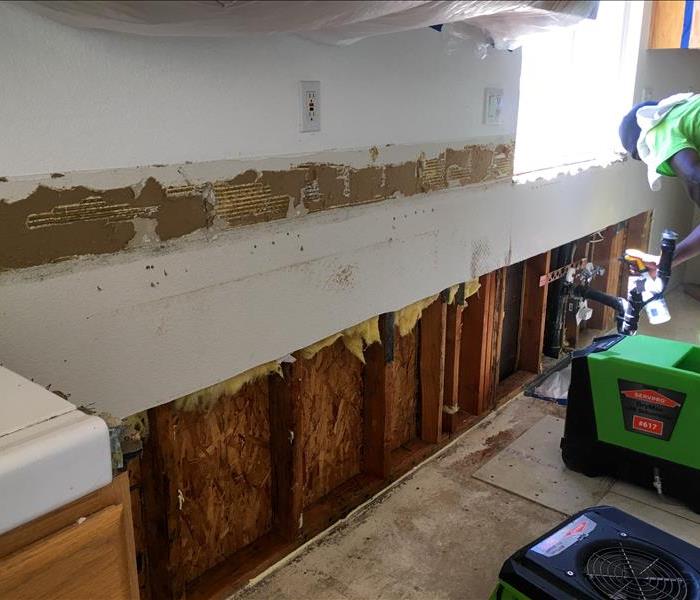How To Protect Your Home From Flooding
12/19/2022 (Permalink)
Flooding is one of the most devastating natural disasters that can happen to your home. It doesn't matter if it's a small-scale flood or a massive storm that has caused major flooding; both can cause significant damage to your home and belongings. In order for you to protect yourself and your home from flooding, it's important to understand what causes flooding in the first place. This article will help shed some light on how you can prevent flooding in your home so that you never have to experience this catastrophe firsthand.
Seal any cracks in your foundation.
Leaks through your foundation are the most common cause of basement flooding. They can happen because of cracks in the wall, foundation or floor that allow water to seep in.
To prevent leaks, check for any cracks in your foundation. If you find any, fill them using concrete sealant or a waterproofing membrane.
Maintain drainage areas.
Maintaining your home’s drainage system is crucial to keeping it safe from flooding. Keep rain gutters and downspouts clean, clear leaves, debris and ice away from the roof of your home, and make sure that downspouts are draining away from the house. Use a broom to remove standing water from your yard if there is any after a heavy rainfall. If mud or debris has washed up against your foundation drainpipe or downspout, use a garden hose to wash it away so that it doesn’t clog up the pipe or block any water flow to those areas.
Install Sump Pump.
A sump pump is a mechanical device that removes water from a basement. It's connected to the sewer system through a drain pipe and must be installed correctly in order to function properly. You should test your sump pump regularly (at least once per month) by connecting it to an extension cord and turning it on for 15 minutes or so, then unplugging it and checking for leaks in the floor around where you have placed it. If no leaks are found, your sump pump is working well!
Keep your water heater safe.
The water heater is your home’s most vulnerable appliance, so it needs careful placement. The best place for a water heater is in an area that can be accessed easily but won’t be damaged if there are leaks. If you have a basement, make sure the floor is sturdy and can support the weight of a full tank of water. If you don’t have a basement or another safe spot, put your hot water tank on a stand or platform so that it’s at least 6 inches off the ground.
Keep in mind that any wall or ceiling near your hot water tank may not be able to survive a flood—and could collapse as soon as you open up the valve to turn on your faucet after flooding has subsided!
Keep valuables and important documents in a safe place.
In the event of flooding, your first line of defense is to avoid exposure to harmful water as much as possible. For example, if you live in an area that may experience flooding, it’s wise to keep valuables and important documents in a safe place. If you have a safe, use it! If not, consider buying one or keeping essential items in waterproof containers. It’s also important to store any irreplaceable items high up so that they won’t be damaged by rising water levels during a flood.
Flooding can happen anywhere; it is important to take measures to protect your home.
Flooding can cause damage to your home and lead to mold growth. It is crucial that you take precautions before the next flood season arrives.
You can prepare your home to protect against flooding. By taking the steps above, you can help keep your property safe and dry in the event of an emergency.




 24/7 Emergency Service
24/7 Emergency Service
